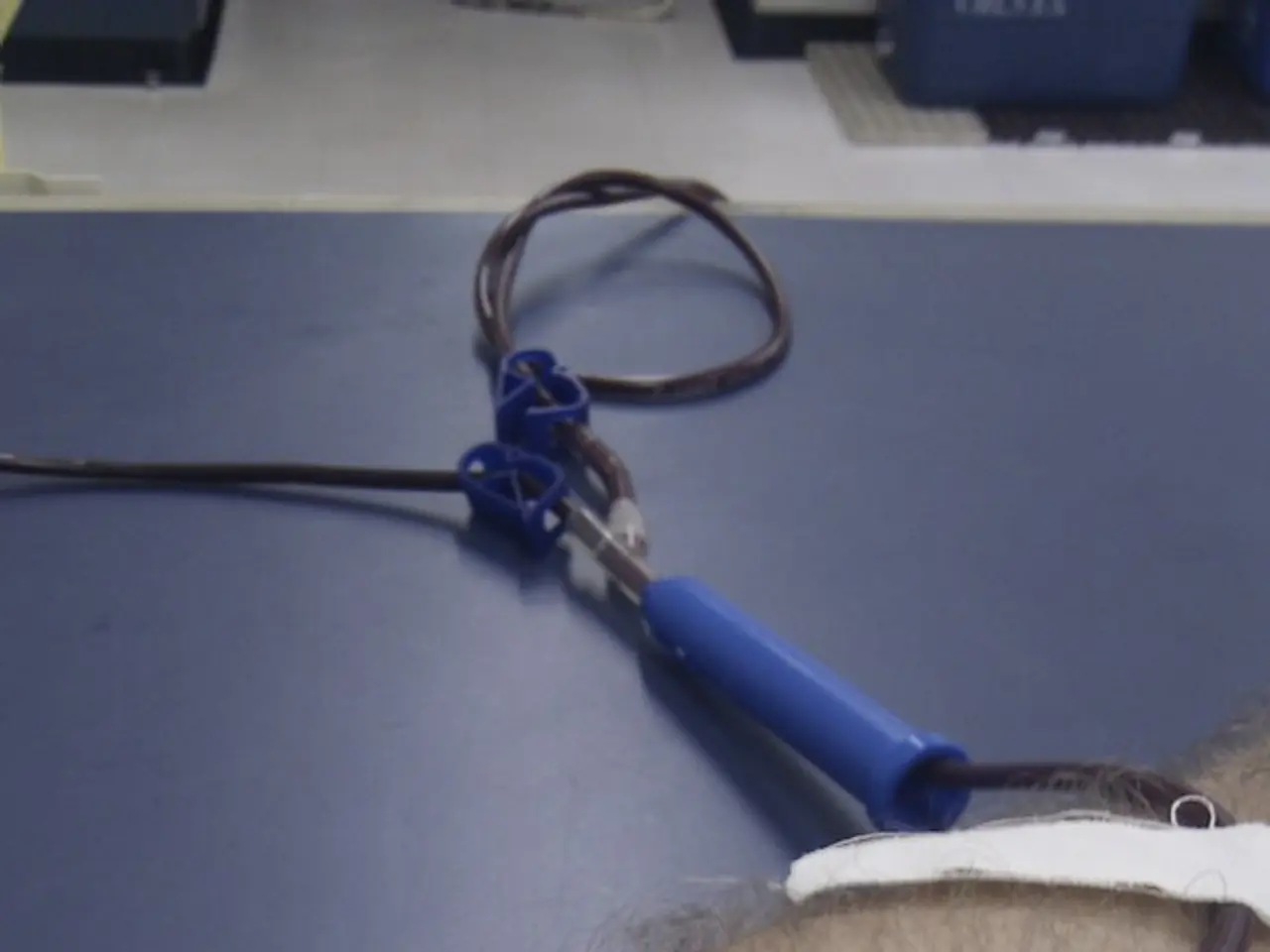Treatment of splenic artery aneurysms through the use of coils and n-butyl 2-cyanoacrylate (NBCA) with a novel polytetrafluoroethylene (PTFE)-coated microcatheter: A case study of 3 individuals
A recent study has suggested that the use of the PTFE-coated Carry Leon NSX microcatheter could lead to reduced complications and improved patient outcomes in the treatment of splenic artery aneurysms (SAA) via embolization.
Key Components and Implications
The PTFE-coated Carry Leon NSX microcatheter, with its non-reactive and slippery material, is designed to improve the ability of the catheter to navigate through blood vessels, making it a valuable tool for precise delivery of embolic agents during minimally invasive procedures.
N-Butyl Cyanoacrylate (NBCA), a liquid embolic agent used to occlude blood vessels, is quickly polymerized upon contact with blood, forming a solid cast that blocks blood flow. The controlled delivery of NBCA using the Carry Leon NSX microcatheter can help prevent premature polymerization or reflux into parent vessels, thereby reducing the risk of complications.
Splenic artery aneurysm embolization is a minimally invasive procedure used to treat aneurysms in the splenic artery. By delivering a material through a microcatheter to block the flow of blood into the aneurysm, embolization can prevent rupture.
Clinical Outcomes and Potential Benefits
The study focused on three female patients with SAAs, all of whom underwent successful embolization via a triple coaxial system, resulting in complete aneurysm occlusion with minimal complications such as mild splenic infarction or transient inflammatory responses.
By improving the precision of NBCA delivery, the risk of complications such as catheter occlusion or unexpected embolization of non-target vessels is reduced. Effective embolization can prevent aneurysm rupture, thereby reducing the risk of severe hemorrhage or other complications.
Future Directions
Further research could focus on long-term follow-up studies to ensure durability of the embolization, comparison with other embolic agents or catheter technologies, and optimization of techniques for improved outcomes.
The study, a retrospective case series, evaluates an alternative embolization technique for SAAs using a combination of coils and NBCA delivered through a Carry Leon NSX microcatheter. The use of a PTFE-coated NSX microcatheter can enhance the safety and efficacy of NBCA injections.
The study was approved by the ethics committee and informed consent was obtained from all patients. The patients involved in the study were a 55-year-old, a 60-year-old, and an 80-year-old, each with varying degrees of renal dysfunction. The SAA measured 26 × 21 × 22 mm and was located near the splenic hilum. A branch originating from the inflow vessel was identified but preserved during the embolization procedure.
The preoperative blood tests revealed mild elevations in ALP levels, gamma-glutamyl transpeptidase, WBC count, and CRP level. Due to renal dysfunction, noncontrast magnetic resonance angiography (MRA) including the Time-SLIP method was used for preoperative evaluation. The Carry Leon NSX microcatheter was developed to reduce the risk of NBCA adhesion, enabling safer and more controlled injections.
- The use of the PTFE-coated Carry Leon NSX microcatheter, a valuable tool in the field of medical-conditions like splenic artery aneurysms (SAA), can lead to improved patient outcomes by reducing complications, such as reduced adhesion of embolic agents like N-Butyl Cyanoacrylate (NBCA), which are often used to treat chronic-diseases like chronic-kidney-disease, through minimally invasive procedures like embolization.
- Further research in health-and-wellness, specifically long-term follow-up studies, can help assess the durability of the embolization procedure, compare it with other embolic agents or catheter technologies, and optimize techniques to improve outcomes, especially in patients with chronic-diseases like chronic-kidney-disease who require such treatments.
- In the case study, the patients underwent a magnetic resonance imaging (MRI) scan, a crucial diagnostic tool in modern science, to evaluate their chronic-kidney-disease and the SAA before the embolization procedure using the Carry Leon NSX microcatheter.




